SUCCINYL COENZYME A SODIUM SALT
Synonym(s):Succinyl CoA sodium salt
- CAS NO.:108347-97-3
- Empirical Formula: C25H41N7NaO19P3S
- Molecular Weight: 891.6
- MDL number: MFCD00057770
- SAFETY DATA SHEET (SDS)
- Update Date: 2025-11-11 18:40:25

What is SUCCINYL COENZYME A SODIUM SALT?
Description
Succinyl-coenzyme A (succinyl-CoA) is an intermediate in the citric acid cycle. It is converted to succinate, which is a metabolic intermediate with various biological activities. Succinyl-CoA is required, with glycine, to form δ-aminolevulinic acid in the first step of porphyrin and heme synthesis. Succinyl-CoA deficiency, caused by vitamin B12 deficiency can disrupt heme and energy production, leading to neuromotor dysfunction.
The Uses of SUCCINYL COENZYME A SODIUM SALT
Succinyl coenzyme A sodium salt has been used:
- for the nonenzymatic succinylation of lysine in vitro,
- as a substrate for adipic acid biosynthesis in recombinant E. coli
- in isocitrate dehydrogenase (ICDH)?treatment for the succinylation of proteins
- as a substrate to study the specificity and kinetics of enzymes such as acetate:succinate CoA-transferase and 5-aminolevulinate synthase (ALA synthase)
What are the applications of Application
Succinyl coenzyme A sodium salt is an intermediate in the citric acid cycle, eventually to be converted into succinate.
Biochem/physiol Actions
Succinyl CoA is an intermediate in the citric acid cycle. It is formed by α-ketoglutarate dehydrogenase by the decarboxylation of α-ketoglutarate. Succinyl CoA is also formed from propionyl CoA during the β-oxidation of odd-chain fatty acids. Succinyl CoA serves as a precursor in heme synthesis. It is also required for the oxidation of ketone bodies.
Purification Methods
If it should be purified further, then it should be dissolved in H2O (0.05g/mL) adjusted to pH 1 with 2M H2SO4 and extracted several times with Et2O. Excess Et2O is removed from the aqueous layer by bubbling N2 through it and is stored frozen at pH 1. When required, the pH should be adjusted to 7 with dilute NaOH and used within 2 weeks (samples should be frozen). Succinyl coenzyme A is estimated by the hydroxamic acid method [Hersch & Jencks J Biol Chem 242 3468 1967]. It is more stable in acidic than in neutral aqueous solutions, but neutral solutions can be stored at –15o with negligible decomposition. [Jordan & Laghai-Newton Methods Enzymol 123 435 1986, Beilstein 26 III/IV 3666.]
Properties of SUCCINYL COENZYME A SODIUM SALT
| storage temp. | -20°C |
| solubility | PBS (pH 7.2): 10 mg/ml |
| form | A crystalline solid |
| color | White to off-white |
Safety information for SUCCINYL COENZYME A SODIUM SALT
| Signal word | Warning |
| Pictogram(s) |
 Exclamation Mark Irritant GHS07 |
| GHS Hazard Statements |
H315:Skin corrosion/irritation H319:Serious eye damage/eye irritation H335:Specific target organ toxicity, single exposure;Respiratory tract irritation |
| Precautionary Statement Codes |
P261:Avoid breathing dust/fume/gas/mist/vapours/spray. P264:Wash hands thoroughly after handling. P264:Wash skin thouroughly after handling. P271:Use only outdoors or in a well-ventilated area. P280:Wear protective gloves/protective clothing/eye protection/face protection. P302+P352:IF ON SKIN: wash with plenty of soap and water. P305+P351+P338:IF IN EYES: Rinse cautiously with water for several minutes. Remove contact lenses, if present and easy to do. Continuerinsing. |
Computed Descriptors for SUCCINYL COENZYME A SODIUM SALT
New Products
4,4-Difluoropiperidine hydrochloride tert-butyl 9-methoxy-3-azaspiro[5.5]undecane-3-carboxylate Indole Methyl Resin N-Isopropylurea N,N-Dicyclohexylcarbodiimide(DCC) MELDRUMS ACID 5-METHYLISOXAZOLE-4-CARBOXYLIC ACID Magnessium Bis glycinate Zinc ascorbate 1-bromo-2-butyne 2-acetamidophenol 9(10H)-anthracenone Erythrosin B, 4-Piperidinopiperidine 2-((4-morpholinophenylamino) (methylthio) methylene) malononitrile 2,4-dihydroxybenzaldehyde 3-(4-morpholinophenylamino)-5-amino-1H-pyrazole-4-carbonitrile Methyl 2-methylquinoline-6-carboxylate 2,6-dichloro-4-nitropyridine 4-Bromo-2-chlorobenzonitrile 2-(benzylamino)acetic acid hydrochloride 4-(tert-Butoxycarbonylamino)but- 2-ynoic acid 3,4-dihydro-2H-benzo[b][1,4]dioxepine 1-Phenyl-1-cycloprppanecarboxylicacidRelated products of tetrahydrofuran


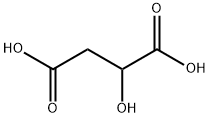

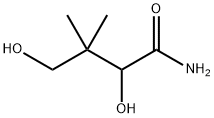
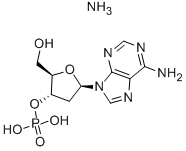
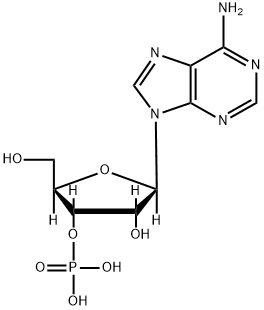
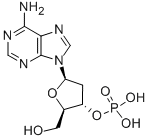
You may like
-
 Succinyl coenzyme A sodium salt CAS 108347-97-3View Details
Succinyl coenzyme A sodium salt CAS 108347-97-3View Details
108347-97-3 -
 3-(4-amino-1-oxoisoindolin-2-yl)-1-methylpiperidine-2,6-dione 98%View Details
3-(4-amino-1-oxoisoindolin-2-yl)-1-methylpiperidine-2,6-dione 98%View Details -
 614-19-7 98%View Details
614-19-7 98%View Details
614-19-7 -
 3112-85-4 Methyl phenyl sulfone 98%View Details
3112-85-4 Methyl phenyl sulfone 98%View Details
3112-85-4 -
 20677-73-0 (2,2-diethoxyethyl)methylamine 98%View Details
20677-73-0 (2,2-diethoxyethyl)methylamine 98%View Details
20677-73-0 -
 3-(4-(hydroxyamino)-1-oxoisoindolin-2-yl)piperidine-2,6-dione 98%View Details
3-(4-(hydroxyamino)-1-oxoisoindolin-2-yl)piperidine-2,6-dione 98%View Details -
 57381-49-4 2-bromo-4-chlorobenzonitrile 98%View Details
57381-49-4 2-bromo-4-chlorobenzonitrile 98%View Details
57381-49-4 -
 4,6-dichloropyrimidine-5-carbaldehyde 98%View Details
4,6-dichloropyrimidine-5-carbaldehyde 98%View Details
5305-40-8
